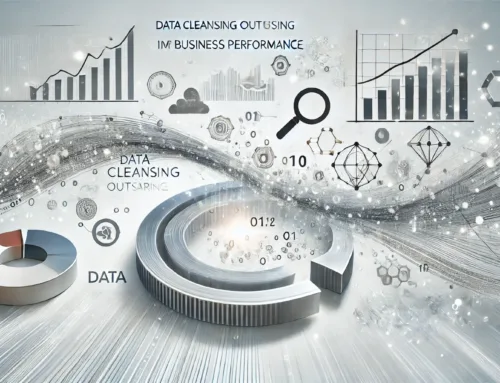When it comes to addressing data errors, have you ever wondered how a data cleansing outsourcing company navigates the intricate maze of inaccuracies and inconsistencies within datasets? The meticulous processes and advanced techniques employed by these companies are designed to not only rectify errors but also prevent their recurrence, ensuring data precision and reliability. By unraveling the complexities of error identification, data validation, standardization, and duplicate management, they strive to maintain data integrity with precision and finesse.
Identification of Errors
When identifying errors in the data cleansing process, it is crucial to adopt a systematic approach that ensures thoroughness and accuracy. Error classification plays a vital role in this process, as it helps in categorizing errors based on their nature and impact. By classifying errors into categories such as syntax errors, semantic errors, and constraint violations, data cleansing experts can prioritize their resolution based on the level of severity and complexity.
Error resolution is the next critical step once errors have been identified and classified. This involves implementing strategies to rectify the errors, such as removing duplicates, correcting inconsistencies, and filling in missing data. It is essential to have a well-defined error resolution workflow in place to address each type of error effectively and efficiently.
Data Validation Techniques
When validating data, you will rely on error detection methods to identify inaccuracies and inconsistencies within the datasets. These methods serve as the foundation for the subsequent cleaning procedures, providing an overview of the necessary actions to rectify the errors. By understanding and implementing effective data validation techniques, you can ensure the accuracy and reliability of your data for informed decision-making.
Error Detection Methods
One effective approach to ensuring data accuracy within a system is through the implementation of various error detection methods, commonly known as data validation techniques. Error prevention strategies play a crucial role in identifying inconsistencies and inaccuracies in data. Data profiling analysis enables the detection of anomalies by examining the data’s structure, content, and relationships. Machine learning algorithms can be utilized to automatically flag potential errors based on patterns identified in the data.
In addition to automated techniques, a manual review process is essential for thorough error detection. Human intervention is valuable in identifying errors that may not be easily detectable by algorithms alone. Through manual review, data cleansing outsourcing companies can ensure a higher level of accuracy in the data cleansing process.
Cleaning Procedures Overview
Implementing data validation techniques is a crucial step in ensuring the accuracy and reliability of data within a system. Error handling plays a pivotal role in cleaning procedures to maintain data accuracy. When errors are detected, the data cleansing outsourcing company employs various validation techniques to rectify discrepancies and enhance the quality of the data. One common method is cross-field validation, where data in different fields are cross-checked to identify inconsistencies or inaccuracies. Additionally, format validation ensures that data is in the correct format, preventing issues such as incorrect dates or invalid email addresses. Another essential technique is range validation, which verifies that numerical data falls within acceptable ranges. By utilizing these data validation methods, the outsourcing company can efficiently identify and correct errors, ultimately improving data accuracy and integrity. These systematic procedures help in maintaining a high standard of data quality, which is crucial for making informed business decisions and ensuring operational efficiency.
Data Standardization Methods
When it comes to data standardization methods, the focus lies on the techniques used to ensure uniformity and consistency in data formats. By implementing standardization techniques, the impact on data quality can be significant, leading to improved accuracy and reliability in decision-making processes. Ultimately, these standardized methods contribute to the efficiency of the data cleansing process by streamlining operations and reducing errors.
Standardization Techniques Used
To ensure accurate and consistent data across various sources, data cleansing outsourcing companies employ a range of standardization techniques. Data enrichment is a key aspect of this process, where missing or incomplete data is filled in using various sources to enhance the overall quality. By standardizing formats, such as dates, addresses, and names, errors are minimized, and data becomes more uniform. This ensures that data is structured in a consistent manner, making it easier to analyze and utilize effectively.
Error prevention is another critical standardization technique used by data cleansing outsourcing companies. By implementing validation rules and checks during data entry, errors are caught and corrected in real-time, reducing the likelihood of inaccuracies slipping through. Additionally, deduplication processes are employed to eliminate redundant data entries, further enhancing data quality.
Impact of Data Quality
Data standardization methods play a vital role in shaping the overall quality and reliability of data within the realm of data cleansing outsourcing companies. Ensuring that data is consistent, accurate, and formatted correctly through standardization techniques has significant implications for both costs and business outcomes.
Cost implications arise from poor data quality, leading to additional expenses associated with fixing errors, redundant processes, and missed opportunities due to inaccurate information. By implementing robust standardization methods, such as deduplication and normalization, companies can reduce the financial burden caused by data errors and inconsistencies.
Moreover, the business consequences of data quality impact decision-making, customer relationships, and overall operational efficiency. Inaccurate data can result in flawed insights, misinformed strategies, and damaged credibility with clients. On the contrary, high-quality standardized data empowers organizations to make informed decisions, enhance customer satisfaction, and drive business growth. Ultimately, investing in data standardization methods is crucial for data cleansing outsourcing companies to mitigate costs, improve decision-making, and achieve sustainable success.
Cleansing Process Efficiency
Efficiency in the data cleansing process is paramount for data outsourcing companies to ensure the accuracy and reliability of their data. Error prevention is a key focus during the cleansing process. By implementing automated validation checks and data standardization techniques, such as deduplication and normalization, errors can be identified and rectified promptly. Process optimization plays a crucial role in enhancing the overall efficiency of data cleansing. This involves streamlining workflows, utilizing advanced algorithms for data matching, and employing machine learning algorithms to continuously improve the cleansing process. Through systematic analysis of data patterns and trends, outsourcing companies can refine their cleansing strategies to minimize errors and enhance data quality. Regular monitoring and evaluation of the cleansing process enable companies to adapt and refine their methods for optimal efficiency. By prioritizing error prevention and process optimization, data cleansing outsourcing companies can ensure that their data is cleansed accurately and efficiently, meeting the highest standards of quality and reliability.
Removal of Duplicate Entries
With the exponential growth of data within organizations, the issue of duplicate entries has become a significant challenge to address. Data cleansing outsourcing companies tackle this problem by employing data deduplication techniques and duplicate record elimination processes. To begin, data deduplication techniques involve the identification and removal of duplicate records from datasets. This process typically includes comparing data entries based on specific criteria such as unique identifiers or a combination of attributes. By utilizing sophisticated algorithms, these companies can efficiently identify and flag duplicate entries for further review.
Once potential duplicates are identified, the next step involves the elimination of these redundant records. Data cleansing outsourcing companies leverage automated tools and manual verification processes to resolve duplicate entries accurately. Through a combination of technology and human oversight, these companies ensure that only unique and accurate data remains in the system. By systematically addressing duplicate entries, organizations can enhance data quality, reduce errors, and improve the overall efficiency of their operations.
Handling Missing Data Scenarios
Identifying and addressing missing data scenarios is crucial for maintaining the integrity and accuracy of your datasets. When handling missing data, data cleansing outsourcing companies utilize various imputation strategies to fill in the gaps. Imputation techniques involve estimating missing values based on existing data patterns, such as mean imputation, mode imputation, or regression imputation.
In addition to imputation strategies, data enrichment plays a vital role in handling missing data scenarios. Data enrichment techniques involve enhancing existing data with additional information from external sources to compensate for missing values. This can include appending demographic data, geolocation data, or historical trends to enrich the dataset and improve its completeness.
Error Correction Strategies
To effectively address errors within your datasets, data cleansing outsourcing companies employ a range of strategic approaches aimed at correcting inaccuracies and inconsistencies. Error correction strategies encompass a variety of methods, including error prevention strategies and data accuracy improvement techniques. One common approach is the implementation of quality assurance measures to ensure that errors are caught and rectified before they impact the dataset. This can involve setting up validation rules, cross-referencing data sources, and conducting regular data audits to identify and address errors promptly.
Additionally, error reduction techniques play a crucial role in enhancing data accuracy. Data cleansing outsourcing companies often utilize advanced algorithms and machine learning models to detect patterns in data errors and automate the correction process. By leveraging these technologies, errors can be swiftly identified and rectified, leading to improved data quality and reliability. Overall, by implementing a combination of error prevention strategies and quality assurance measures, data cleansing outsourcing companies can effectively enhance the accuracy and integrity of your datasets.
Frequently Asked Questions
How Do You Ensure Data Privacy and Security During the Cleansing Process?
To ensure data privacy and security during cleansing, you implement robust compliance monitoring. Encryption protocols are essential for safeguarding sensitive information. By combining these measures, you fortify your data against breaches and uphold confidentiality standards effectively.
Can You Handle Large Volumes of Data for Cleansing Efficiently?
You can efficiently handle large volumes of data for cleansing by addressing scalability challenges through strategic performance optimization. This ensures smooth processing, timely completion, and accurate results, enhancing overall efficiency and effectiveness in managing data cleansing tasks.
What Measures Do You Take to Prevent Data Loss or Corruption?
To prevent data loss or corruption, we implement rigorous data validation techniques and error detection strategies. By continuously monitoring data integrity and employing automated checks, we ensure the accuracy and reliability of your data.
How Do You Handle Data With Complex Relationships and Dependencies?
You handle data with complex relationships and dependencies by focusing on entity resolution and data normalization. Ensuring accurate data lineage and maintaining data integrity are key to managing intricate connections effectively in your datasets.
Do You Provide Ongoing Support for Data Quality Maintenance Post-Cleansing?
Ensuring data integrity post-cleansing is vital. You offer continuous support for data validation, monitoring, quality assurance, and metrics. This ongoing assistance guarantees sustained accuracy and reliability in your data, enhancing overall operational efficiency and decision-making capabilities.




